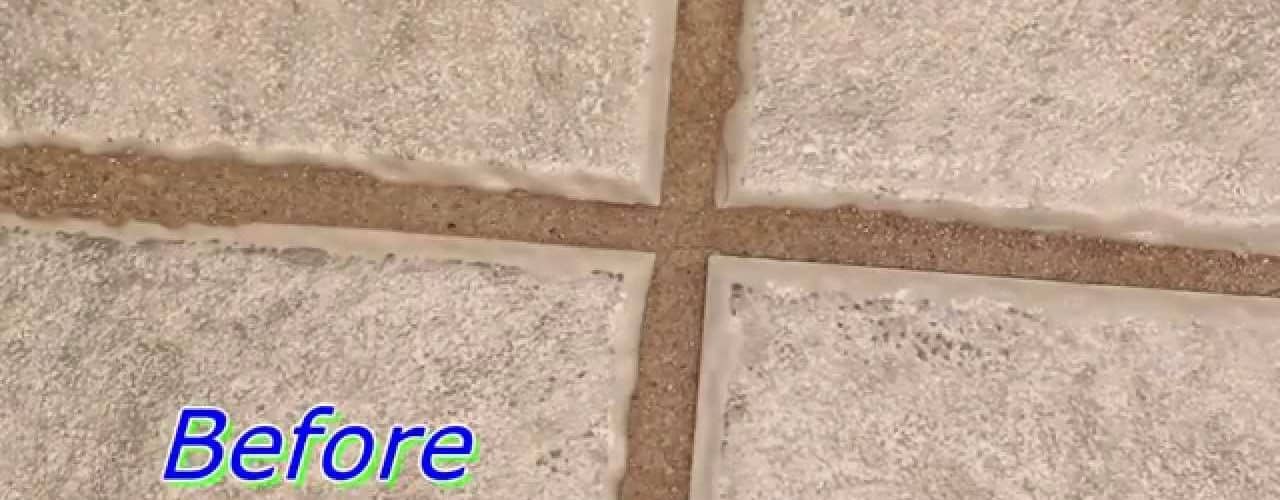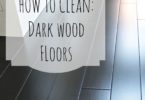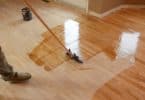Tile flooring can be one of the most beautiful types of flooring in a home. Ceramic or stone tiles are most common in kitchens and bathrooms in a home. Tile flooring provides a tremendous resale value for a home as well as an unbeatable surface. A tile floor consists of a tile pattern laid out, equally spaced, covering the floor area with a grout lining between each tile. The grout serves as a protective sealant from water or other exposures that could potentially cause tiles to lift, resulting in an uncomfortable surface. Selecting the right grout can have a drastic impact on the overall design. A homeowner can select a matching grout color to blend the appearance of the floor and create consistency. They can also choose a grout color that stands out from the tile for a more dramatic appearance. Regardless of the effect the homeowner is looking for, dirty grout can have a strongly negative effect on any tile floor. There are a few basic cleaning techniques for cleaning grout that will ensure a beautiful appearance throughout the entire room.
Before cleaning with a stronger product, first soak the grout with water. Allowing the water to dry into the grout will remove any loose debris from the surface and make it a lot easier for you to clean. Always be sure to use gloves and protective eye coverings when working with any solution for cleaning grout on a tile floor. It is important to avoid using a metal bristle brush as these can chip and wear away the grout. Testing the product on a small area is important with any of the products suggested to make sure it does not have a negative reaction to the flooring. Never mix any cleaning products as this can result in a horrible odor and possibly cause a chemical reaction that may be harmful to the floor surface. With these tips in mind, it is now time to select the cleaning product that is best for your dirty grout.
A lot of grout stains can be easily removed with a vinegar or baking soda solution. For a vinegar solution, use equal parts vinegar and water. Spray the solution on the dirty area or the entire floor. Allow the solution to sit on the area for two to three minutes, and then use a stiff brush to scrub the surface. Scrubbing in small circles will remove a larger amount of debris from the grout. After you are satisfied with the cleaning, simply add water and mop up the remainder. It is important to soak up any of the solution the mop missed by using paper towels or a sponge. The baking soda solution is geared for smaller cleaning areas. Add baking soda and a small amount of water to create a paste. Dab the paste to the effected area and scrub with a brush. After the cleaning is finished, add water and mop up the remainder. Likewise to the vinegar solution, use a towel or sponge to remove any excess water from the flooring. Household cleaners such as Mr. Clean, Lysol or any powder-base cleaner may also clean the dirty grout and should be applied and removed in the same manor as the vinegar solution.
If you find that household cleaners or vinegar just do not seem to be doing the trick, consider a solution for heavy duty stains. Stronger products such as hydrogen peroxide, chlorine bleach, or oxygen bleach powder are great for removing heavy staining. Be sure to dilute these products with water before using and scrub with a stiff brush. It is very important to remove the entire product after cleaning with a sponge or towel. Avoid using bleach products on colored grout because it may lighten the grout entirely.
After the floor is cleaned, apply a grout sealer to the flooring to protect the surface from future damage. Select the grout sealer that is right for the type of grout you have and reapply the sealer, in one to two coats, at least twice a year. Having a beautiful tile floor does not have to be a problem. It can easily be something you are able to enjoy for the entire lifetime of your home.
<>







